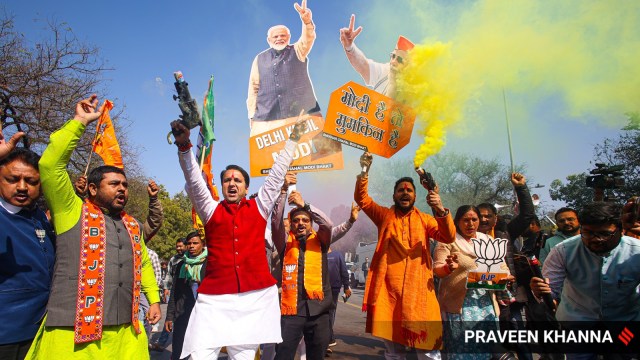Delhi elections 2025 by the numbers: Fewer women in Assembly, minority representation slips
Among the minority communities, nine candidates secured seats, with five from the Sikh community and four from the Muslim community.
 BJP supporters celebrate after the party's victory in the Delhi Assembly elections. (Express Photo: Praveen Khanna)
BJP supporters celebrate after the party's victory in the Delhi Assembly elections. (Express Photo: Praveen Khanna)The 2025 Delhi Assembly election results painted a striking picture of shifts in political representation. While the election focused heavily on women-centric schemes — ranging from free bus rides to subsidized gas cylinders — female representation in the legislature fell from eight in 2020 to just five in 2025.
Among the minority communities, nine candidates secured seats, with five from the Sikh community and four from the Muslim community. AAP’s minority representation includes all four Muslim MLAs and two Sikh ones. Meanwhile, the BJP’s only minority representation in the new Assembly comes from its three Sikh MLAs.
The average age of the new Assembly is 52, with the oldest member, BJP’s 73-year-old Tilak Ram Gupta from Tri Nagar, and the youngest, BJP’s Umang Bajaj, aged 31, from Rajinder Nagar. Reflecting the BJP’s electoral sweep, the top three richest MLAs, including Shakur Basti’s Karnail Singh, who leads with assets worth over Rs 259 crore, are from the BJP. By contrast, the poorest legislator, AAP’s Burari MLA, holds assets valued at just Rs 14.4 lakh.
These results signal not only a generational and economic disparity but also highlight the continued challenges of gender and minority representation in Delhi’s political landscape.







